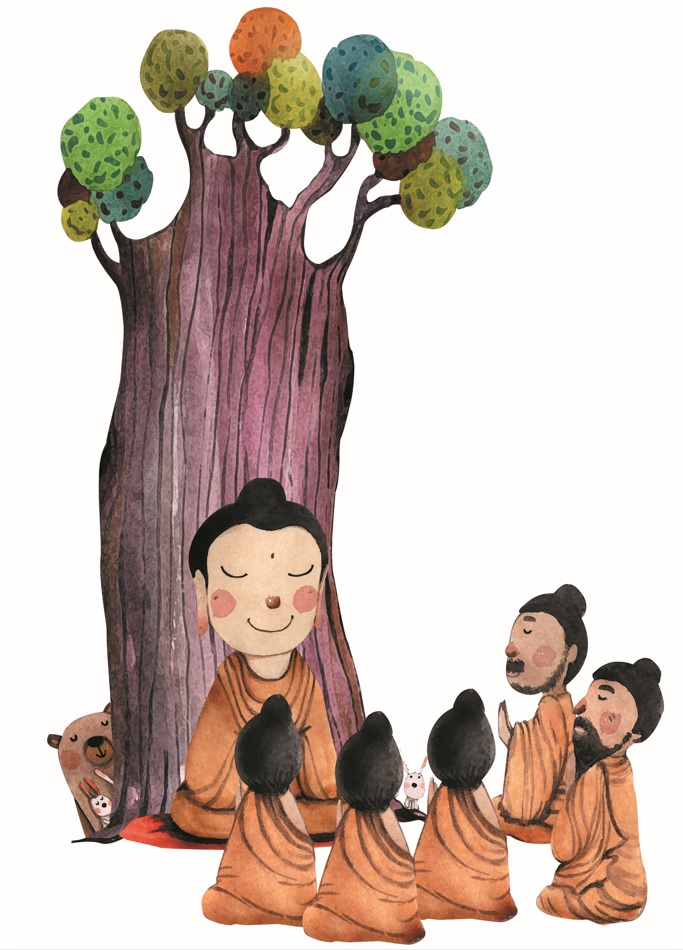Special Topics
Refuge Taking Rituals of Different Buddhist Traditions
For all Buddhist traditions, taking refuge in the Three Jewels is the fundamental step toward engaging in Buddhist practice. Since Chinese Buddhists hold a serious attitude towards the refuge taking ritual, one often acquires the identity as a Buddhist through participating in a group refuge ceremony. From then on, a refuge taker starts their new life as a Buddhist disciple. However, the Southern and Tibetan Buddhist traditions have different ways of holding the refuge taking ritual. So what are their respective characteristics and differences?Southern Buddhism: Taking refuge time after time
In Theravada Buddhist countries, most people have taken refuge in the Three Jewels at a young age. With the Three Refuges and the Five Precepts naturally as part of their lives, people often visit monasteries seeking spiritual sustenance, education, and even medical care. To maintain the purity of the precept essence, families and individuals will put on white clothes on Sundays and visit Buddhist monasteries to ask monks to transmit the Three Refuges and the Five Precepts. They can also ask a venerable to repeat the transmission for them even on weekdays.
The refuge taking ritual in the Southern tradition is quite simple and short. First, a refuge taker will follow a venerable to prostrate to the Buddha's image for three times. Next, they make three prostrations to the venerable, and then repeat after the venerable the Tisarana (the Pali word for "Three Refuges"), line by line:
 Homage to Him, the Blessed One, Arahant, truly and completely Awakened One.
Homage to Him, the Blessed One, Arahant, truly and completely Awakened One.To the Buddha I go for refuge. To the Dharma I go for refuge. To the Sangha I go for refuge.
For the second time, to the Buddha I go for refuge. For the second time, to the Dharma I go for refuge. For the second time, to the Sangha I go for refuge.
For the third time, to the Buddha I go for refuge. For the third time, to the Dharma I go for refuge. For the third time, to the Sangha I go for refuge.
Following the recitation of the Tisarana, the venerable transmits the Five Precepts to the refuge taker, who repeats each article of the Five Precepts after the venerable. Then comes the recitation of the Sutra of Recollecting of the Three Jewels—the content regarding Buddhānussati, recollection of the Buddha; Dhammānussati, recollection of the Dharma; and Saṅghānussati, recollection of the Sangha–and several commonly recited Paritta discourses such as the Maṅgala Sutta, the Metta Sutta, and the Ratana Sutta. Lastly, after completing the ritual with merit transfer, the venerable will deliver a Dharma talk to the participants.
Since, in Theravada Buddhist countries, most people became Buddhists while they were children, they do not particularly take Dharma names after taking refuge, nor do they have a refuge certificate.
Tibetan Buddhism: Taking refuge only with lama's approval
In Tibetan Buddhism, one can ask for refuge at any time, but only with approval from the lama, who will assess the person's faith in the Three Jewels. If the lama thinks the time is ripe, they'll give an appointment to the requester, and also explain in advance the meaning of taking refuge in order to elucidate the reason for Buddhist practice, as well as the required code of conduct.
The Tibetan Buddhist ritual of refuge taking is simple. First, the refuge taker follows the lama to prostrate to Sakyamuni Buddha's statue three times. Next, the refuge taker makes three prostrations to the lama, and then repeats this process after the lama the refuge prayers in Sanskrit or the Tibetan language:
I take refuge in the Lama.
I take refuge in the Buddha.
I take refuge in the Dharma.
I take refuge in the Sangha.
After the recitation, the lama explains the twelve precepts (śikṣāpada) for refuge takers, which is the code of conduct as a Buddhist disciple. Meanwhile, the lama assigns Buddhist practices to the refuge taker, which may include Buddhist chants (dhāraṇī), sutra recitation, and prostrations, depending on the refuge taker's karmic capacities and abilities. The ritual ends with the refuge taker transferring merit and prostrating to the lama and the image of the Buddha. Depending on what their ability allows, the refuge taker can make offerings such as a ceremonial scarf (khata) or other offerings to the lama.
The first line of Tibetan Buddhist refuge prayers is "I take refuge in the Lama," which is obviously different from other Buddhist traditions. The "Fourfold Refuge," as referred to in Tibetan Buddhism, stems from the perspective that the Lama actually represents and encompasses the Three Jewels. Without a Lama transmitting the Buddhadharma, there is no way for people to learn about it. Therefore, Tibetan Buddhism holds the Lama in high esteem and gratitude.
Related articles:
Taking Refuge – The First Step to Firm Buddhist Practice
Overcoming the Eight Major Obstacles to Taking Refuge
Buddhist Stories on the Auspiciousness of Taking the Three Refuges
Taking Refuge: A Sincere Vow to Engage in Buddhist Practice
Common Questions on Taking Refuge
Refuge Taking Rituals of Different Buddhist Traditions
The Three Refuges Verse for Morning and Evening Services as a Reminder
Resource: Issue 373 of Humanity Magazine, Dharma Drum Publishing Corporation
Translation: Sinag-ling Li (李祥苓)
Editing: Keith Brown, Chia-Cheng Chang (張家誠)
